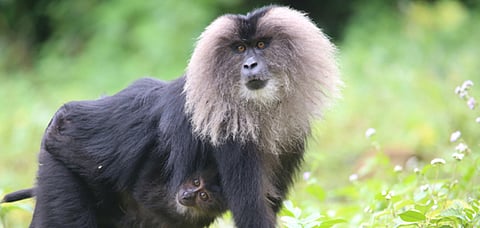
- Destinations
- Experiences
- Stay
- What's new
- Celebrating People
- Responsible Tourism
- CampaignsCampaigns
- SubscribeSubscribe
- Buy Now

Renowned naturalists Surya Ramachandran and David Raju have released their new book Photographic Field Guide &ndash Wildlife of South India. This is a first-of-its-kind comprehensive field guide covering all mammals, birds, butterflies, dragonflies, reptiles and amphibians of the six states (Tamil Nadu, Kerala, Karnataka, Goa, Andhra Pradesh and Telangana) of South India.
It is a showcase of the rich biodiversity of South India and is sure to transform wilderness walks and safaris, and even the way people perceive urban wilderness. The book, which has 360 pages, covers 1,920 species belonging to the six taxa using 1,850 photographs contributed by around 280 photographers from India and abroad. It has been designed by Mugdha Sethi and edited by Faiza Mookerjee. The book is supported by WWF India and the Muthiah Research Foundation.
David Raju works as a naturalist in Central India and has authored a well-regarded field guide on his first love, the dragonflies and damselflies of Kerala.
Surya Ramachandran used to be a documentary producer and now works as a full-time naturalist. He is currently an ambassador for Swarovski Optik Birding and runs a conservation tourism outfit focused on snow leopards and other trans-Himalayan fauna in the mountains of Ladakh.
Over the years, the two of them have been invited to conduct many training sessions for park guides, naturalists, wilderness lodges and various forest departments. Nothing satisfies these two as much as being an ambassador for the forest by making the wilderness more interesting and less daunting for people from all walks of life. For their efforts in the field of conservation tourism, each have been awarded the prestigious TOfT/Sanctuary Asia Naturalist of the Year.
The book is a collection of their combined 16 years of experience and knowledge, accumulated over their various explorations.
&ldquoAs professional wilderness guides and naturalists, we understand the importance of simplifying and presenting complicated information in a beautiful concise manner," says Surya Ramachandran. "That is essentially what this book is all about &ndash a powerful tool for anyone who wishes to explore and better understand the wild corners of the region. It has been three years since we started working on the book and in the end, all we want to do is get back out there and revisit all the wild spaces of South India that inspired us to make this book a reality.&rdquo
David Raju adds, &ldquoThe first connect we make with anything we come across, from people we come across to objects and wild denizens, is the process of naming it. This often leads to the building of curiosity, awareness and eventually conservation in some form. This book is an effort to ensure that the process of initial identification is made easy and plant the seeds of exploration and the need for preservation of our biodiversity.&rdquo
The information presented in various sections have been vetted and added to by experts from the scientific world. These experts include Nameer P.O. (Mammals) Dipani Sutaria (Marine Mammals) Rajesh Puttaswamaiah (Bats) Praveen J, Gnanaskandan K, Ramit Singal, Ashwin Vishwanathan and Raja Bandi (Birds) Praveen H.N. and Anil Zachariah (Amphibians) Zeeshan Mirza, Vivek Philip Cyriac, Chaitanya R and Achyuthan Srikanthan (Reptiles) Sneha Dharwadkar (Turtles and Tortoises) Ashok Sengupta, V.K. Chandrasekharan and Karthikeyan Srinivasan (Butterflies) and Subramanian K.A., Jeevan Jose and Vivek Chandran (Dragonflies).
Padma Shri Romulus Whitaker, the renowned herpetologist, has written the foreword. Sharing their thoughts on the book, Romulus Whitaker and writer Janaki Lenin said, "This is it. The ultimate handy field guide to replace all others, featuring South India's dragonflies and butterflies, amphibians, birds, reptiles and mammals.&rdquo
This is the second such book by the authors. Their first book &lsquoThe Photographic Field Guide &ndash Wildlife of Central India&rsquo was published in 2016. It aimed to shift the focus of visitors and local guides towards wilderness as an entity, and not just the mega species. The book covered 850 species from six taxa and covered all Central Indian landscapes from Ranthambore to Tadoba to the Bundelkand Plateau in the north. The difference brought about by that book encouraged them to write more to bring about similar awareness and change in other regions of India as well.
The book is available at photofieldguides.com for buyers within India
